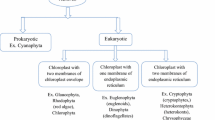Abstract
Various biological nitrogen removal processes have been developed for energy saving in the municipal wastewater treatment plant (MWTP). Recently, a nitrogen removal method using microalgae is emerging as an innovative method. This study has addressed how much of nitrogen was removed by microalgae and how much of electric energy was saved at the same time. For the verification purpose, a long term operation was carried out in a round shape reactor to identify an optimum condition of the highest energy saving rate along with the highest nitrogen removal rate, determined by adjusting time using a light emitting diode (LED) to activate photosynthesis reaction of microalgae and aeration time in a laboratory scale. As a result, it was found that 6.6% or up to 23.8% of energy was saved with biological reaction of microalgae, compared with the traditional nitrogen removal process based on nitrification–denitrification. This indicated that the operation can be flexibly conducted according to the specific operating conditions from each MWTP and its own target energy independence rate, and the findings can be used as a base data for applying such methods using microalgae to the actual treatment plant.






Similar content being viewed by others
Notes
Glass microfiber filters please delete.
References
APHA (American Public Health Association) (2012) Standard methods for the examination of water and waste water. American Public Health Association, Washington
Bagchi S, Biswas R, Nandy T (2012) Alkalinity and dissolved oxygen as controlling parameters for ammonia removal through partial nitritation and ANAMMOX in a single-stage bioreactor. J Ind Microbiol Biotechnol 37:871–876. https://doi.org/10.1007/s10295-010-0744-3
Chia M, Lombardi A, Melao M (2013) Growth and biochemical composition of Chlorella vulgaris in different growth media. Ann Braz Acad Sci 85(4):1427–1438. https://doi.org/10.1590/0001-3765201393312
Gonzalez A, Fernandez F, Canizares P, Rodrigo M, Pinar F, Lobato J (2014) Energy recovery of biogas from juice wastewater through a short high temperature PEMFC stack. Int J Hydrog Energy 39(13):6937–6943. https://doi.org/10.1016/j.ijhydene.2014.02.119
Guven H, Ersahin M, Dereli R, Ozgun H, Isik I, Ozturk I (2019) Energy recovery potential of anaerobic digestion of excess sludge from high-rate activated sludge systems co-treating municipal wastewater and food waste. Energy 172:1027–1036. https://doi.org/10.1016/j.energy.2019.01.150
Im J, Gil K (2015) Effects of the influent ammonium nitrogen concentration on nitrite accumulation in a biological nitritation process. Environ Earth Sci 73(8):4399–4404. https://doi.org/10.1007/s12665-014-3724-5
Im J, Jung J, Bae H, Kim D, Gil K (2014) Correlation between nitrite accumulation and the concentration of AOB in a nitritation reactor. Environ Earth Sci 72(1):289–297. https://doi.org/10.1007/s12665-014-3285-7
Kaneko K, Fujiwara K, Kimura Y, Kurata K (2006) Effect of blue-light PPFD percentage in red and blue LED low-light irradiation during storage on the contents of chlorophyll and rubisco in grafted tomato plug seedlings. Jpn Soc Environ Control Biol 44(4):309–314. https://doi.org/10.2525/ecb.44.309
Kang D (2016) Advanced wastewater treatment by microalgae-bacteria consortium. Dissertation, Myungji University
Kim T (2013) A development of next-generation advanced wastewater treatment system using microalgae and LED light source. Dissertation, Kyunghi University
Kim D, Kim S, Oh Y, Park C (2013) A study on optimal treatment conditions and operational characteristics of nutrient removal using microalgae. J Korean Soc Urban Environ 13(1):43–50. https://doi.org/10.4995/thesis/10251/59409
Kim D, Kim B, Choi J, Kang Z, Kim H (2014) The effect of microalgal growth on nutrient sources using microalgal small scale raceway pond (SSRP) for biodiesel production. Korean J Microbiol 50(4):313–318. https://doi.org/10.7845/kjm.2014.4076
Lee C, Lee S, Ko S, Oh H, Ahn C (2015) Effects of photoperiod on nutrient removal, biomass production, and algal-bacterial population dynamics in lab-scale photobioreactors treating municipal wastewater. Water Res 68:680–691. https://doi.org/10.1016/j.watres.2014.10.029
Marcin D, Marcin Z, Marta K (2016) Efficiency of methane fermentation of waste microalgae biomass (WMAB) collected in processes of reclamation of eutrophicated water reservoirs. Environ Earth Sci 75:525. https://doi.org/10.1007/s12665-015-5168-y
Min B, Hur S (2015) Optimum culture condition on four species of microalgae used as live food for seedling production of bivalve. Korean J Malacol 31(1):35–41. https://doi.org/10.9710/kjm.2015.31.1.35
Ministry of Environment (2017) Sewerage statistics, Sejong City, Korea
Park J (2008) Energy saving technologies for sewage treatment plant. Mag Soc Air-Conditioning Refrig Eng Korea 37(8):70–76
Raschke RL (1993) Guidelines for assessing and predicting eutrophication status of small southeastern piedmont impoundments. In: Georgia Water Resources Conference, Athens, Georgia, pp 1–4
Sebastian B, Dahmke A, Kolditz O (2017) Subsurface energy storage: geological storage of renewable energy - capacities, induced effects and implications. Environ Earth Sci 76:695. https://doi.org/10.1007/s12665-017-7007-9
Weinberger G, Hentschke C, Neis U, Ergünsel A, Pereira R, Gere P, Víg A, Lele I, Lele Zule M, Thiebeaut J, Cludts M, Gregoire M (2011) Combined ALgal and BActerial waste water treatment for high environmental QUAlity effluents (ALBAQUA). PTS Research Report
Acknowledgements
This research was supported by the Basic Science Research Program through the National Research Foundation of Korea (NRF) funded by the Ministry of Education (No. 2017R1D1A1B06035481).
Author information
Authors and Affiliations
Corresponding author
Additional information
Publisher's Note
Springer Nature remains neutral with regard to jurisdictional claims in published maps and institutional affiliations.
This article is a part of Topical Collection in Environmental Earth Sciences on Water Sustainability: A Spectrum of Innovative Technology and Remediation Methods, edited by Dr. Derek Kim, Dr. Kwang-Ho Choo, and Dr. Jeonghwan Kim.
Rights and permissions
About this article
Cite this article
Lee, J., Gil, K. Spatial optimization of operating microalgae bioreactor for nitrogen removal and electricity saving. Environ Earth Sci 79, 239 (2020). https://doi.org/10.1007/s12665-020-08983-8
Received:
Accepted:
Published:
DOI: https://doi.org/10.1007/s12665-020-08983-8




